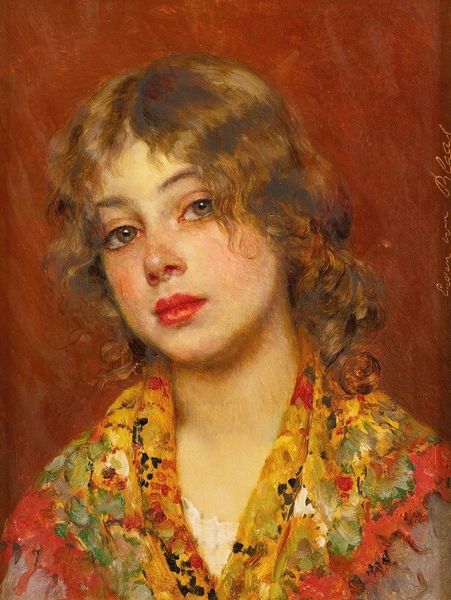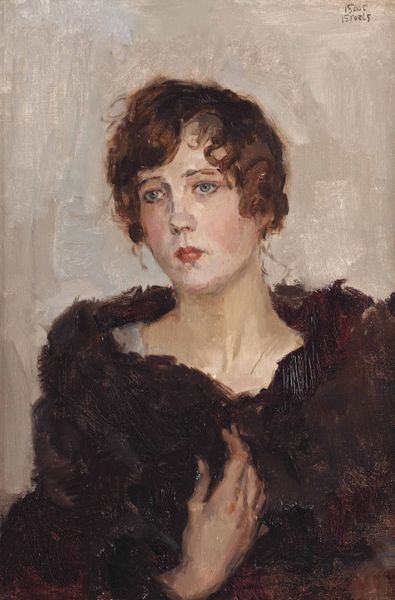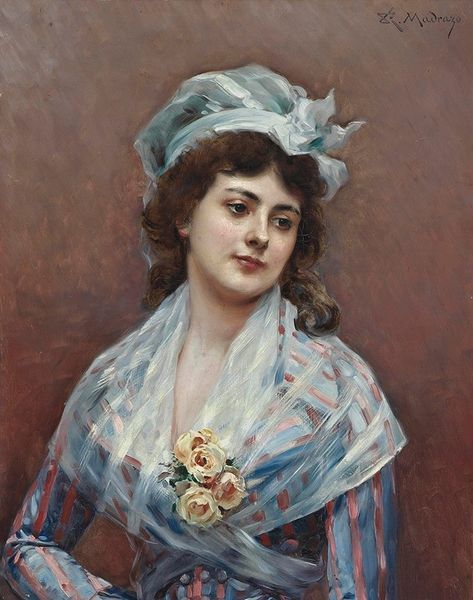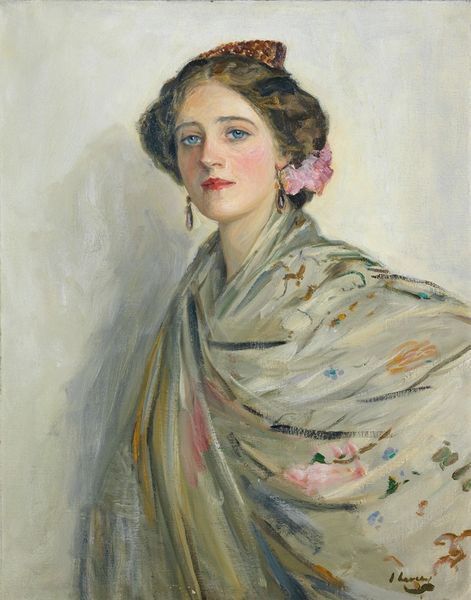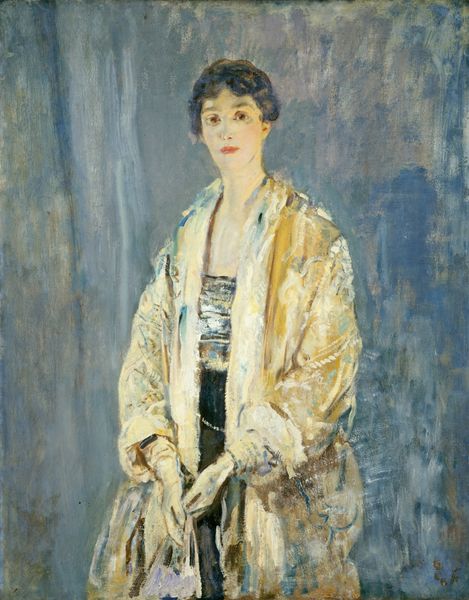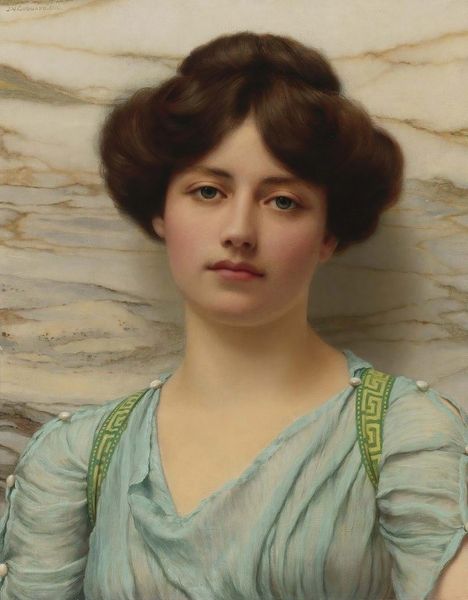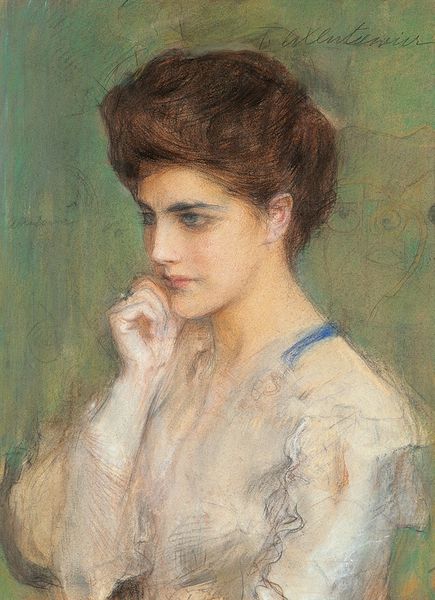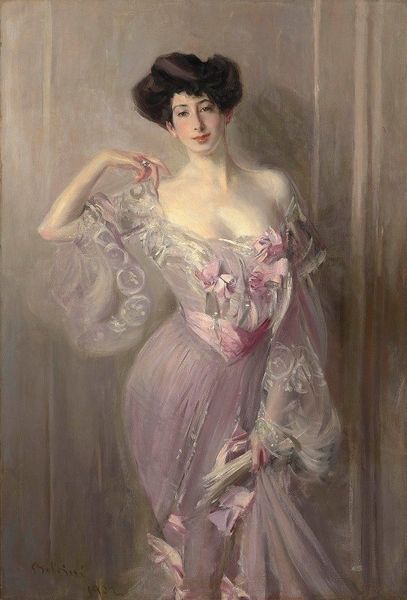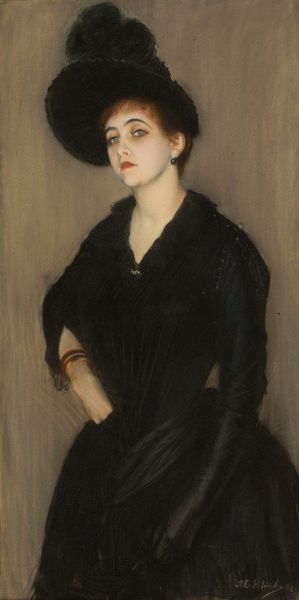
painting, oil-paint, impasto
#
portrait
#
painting
#
oil-paint
#
impasto
#
romanticism
Dimensions: 76.2 x 60.96 cm
Copyright: Public domain
Curator: "The Lavalier" by Rose O'Neill presents us with a compelling portrait of a young woman, seemingly lost in thought, set against a subtly patterned backdrop. What strikes you most about it? Editor: I'm immediately drawn to the texture. The visible brushstrokes, the impasto particularly in the fabric—it gives the painting a tactile quality, as though you could reach out and feel the silk of that robe. The material construction really shines through. Curator: Absolutely, and if we think about the garment itself, the choice of a kimono-style robe, it reflects broader cultural exchanges and appropriations of the time. Was O'Neill engaging with Japonisme, and how does this woman's attire relate to her own self-fashioning, perhaps pushing against the restrictive gender roles prevalent in the late 19th and early 20th centuries? Editor: Right, and let's not forget O'Neill was commercially successful by designing the Kewpie characters; this "high art" portrait offers a fascinating contrast to her mass-produced creations. How did her understanding of design and production, her awareness of the market influence pieces like this? Was it meant for a salon, for private enjoyment? Curator: It certainly provokes questions about the value placed on different kinds of artistic labor. Moreover, her gaze, directed just beyond the frame, and her delicate handling of the necklace suggest introspection, possibly yearning. Where do these romantic qualities sit alongside her more populist designs? Editor: I also notice the details of that lavalier necklace itself, probably made of glass or semiprecious materials. Where was something like that made, who assembled it? What does it say about labor practices of the era, the supply chains, and the ready access to material adornment even then? Curator: Those questions invite an exciting material investigation. Considering O'Neill’s personal history as a progressive figure, might the woman depicted be a fellow artist or intellectual, challenging social conventions through her creative practice and sartorial choices? How might she understand the concept of "beauty"? Editor: For me, what stands out is how O'Neill manipulated her materials and her understanding of them to create something with both mass appeal via design but also refined technique here. It creates a different layer that asks us how we even differentiate between ‘fine’ and ‘applied’ arts. Curator: A compelling point to ponder as we engage with the layers of meaning woven into this captivating portrait. Editor: Exactly; it asks us to reconsider O’Neill's range through production, class, and gender contexts and what we value from both past and present art and creation.
Comments
No comments
Be the first to comment and join the conversation on the ultimate creative platform.

